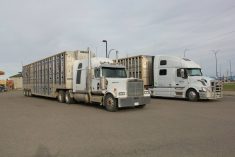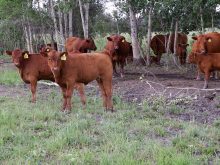Computerized meat analysis is taking the beef industry one step closer to finding the perfect steak.
But while the technology is almost ready to use, researchers say processors must make the next move.
“If they are truly interested in knowing the tenderness of the product they are selling, they will be able to adopt it soon,” said Mohammad Koohmaraie of the United States Meat Animal Research Centre in Clay Center, Nebraska.
A Calgary company has just been given the green light to commercially develop a computer vision system that takes a digital picture of a carcass while it moves on the processing line. This picture assesses the quality and yield of the entire carcass.
Read Also

August rain welcome, but offered limited relief
Increased precipitation in August aids farmers prior to harvest in southern prairies of Canada.
The system has been tested at Cargill Foods in High River, Alta., for several years. It was developed by scientists at Agriculture Canada’s research centre in Lacombe, Alta.
In the United States, a system has been developed that removes a steak from between the 12th and 13th ribs one to three days after the animal is killed. The one-inch thick steak is passed before a camera that is connected to a computer.
The system predicts with 90 percent accuracy how much saleable red meat will come from the carcass after bones are removed and fat is trimmed.
The steak is cooked for 4.5 minutes to medium doneness and then subjected to a shear force test that predicts if the meat will be tender, medium or tough 14 days following slaughter.
Koohmaraie said the test isn’t expensive if processors consider how much information they can obtain. Being able to guarantee tenderness, he added, makes it possible to ask more money for some cuts.
The American grading system uses marbling as the basis of quality, but Koohmaraie said marbling doesn’t have a big effect on tenderness.
Many tender carcasses are now discounted because they have insufficient marbling to be graded as USDA choice or higher.















